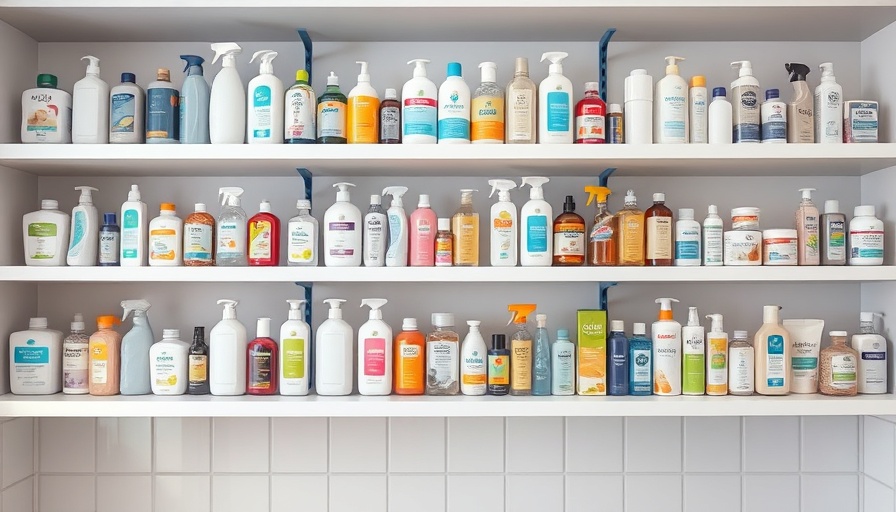
Understanding the Human Oxidation Field
Recent research spearheaded by the Max Planck Institute for Chemistry has uncovered the intriguing dynamics of how humans generate a personal oxidation field indoors. This field, made up of hydroxyl radicals (OH), results from complex interactions between our skin's oils and ozone present in the air. Essentially, the moment we step indoors, we not only breathe in the air but also contribute to its chemistry, influencing air quality around us.
The Role of Personal Care Products in Air Chemistry
This latest study reveals a concerning relationship between the use of personal care products, such as perfumes and lotions, and the suppression of these OH radicals. When people apply these products, they inadvertently create a barrier that alters their oxidation field. For instance, body lotion acts as a hindrance, obstructing air ozone from reacting with skin squalene, a compound naturally present in human skin that plays a crucial role in generating OH radicals. Moreover, the ethanol present in fragrances is known to serve as a 'sink' for these radicals, further reducing the oxidative effects.
Implications for Indoor Air Quality and Human Health
Considering that individuals spend an estimated 90% of their time indoors, the ramifications of these findings are significant. The indoor air is often a hotbed of chemical compounds, sourced from everything ranging from furniture and cleaning products to cooking fumes. When personal care products are introduced to this mix, they can contribute to a chemical cocktail that may degrade air quality.
As we become increasingly aware of air quality issues, understanding how common products influence our immediate environment becomes essential. Poor indoor air quality has been linked to a variety of health issues, including respiratory problems and decreased productivity, particularly concerning for industries where high performance is expected.
Future Predictions and Trends in Indoor Chemistry
As research in this realm progresses, we can anticipate a rise in demand for innovations aimed at improving indoor air quality. Companies producing personal care products may need to reconsider ingredients and formulations, focusing on natural or ozone-friendly compounds to minimize adverse oxidative processes. Moreover, there is potential for the development of smart technologies that monitor indoor air chemistry in real-time, providing insights and alerts to enhance environmental health and wellness.
Decision-Making in Product Development
For CEOs and marketing managers, these insights open up avenues for strategic decision-making. Understanding consumer preferences for wellness-oriented products can shape marketing campaigns and product development in meaningful ways. As consumers increasingly seek transparency about ingredients and their health impacts, businesses should anticipate the growing trend towards eco-friendly and health-safe products and consider aligning their offerings accordingly.
Practical Insights on Indoor Air Quality
To help improve indoor air quality, consider implementing practical strategies. These may include installing air purifiers designed to reduce ozone levels, promoting the use of natural body care products free from harmful compounds, or encouraging better ventilation in indoor spaces. By fostering these practices, companies can not only support the wellbeing of their employees but also align with broader trends in sustainability and health.
Addressing Common Misconceptions
A common misconception is that indoor pollutants primarily stem from external sources. However, personal care products can significantly alter indoor air chemistry. This study underscores the importance of recognizing and addressing all potential sources of indoor pollution to foster a healthier living and working environment.
Conclusion: A Call for Conscious Choices
As we navigate this complex intersection of personal care and air quality, it becomes imperative for us all—especially those in leadership and business roles—to make conscientious choices about the products we use and promote. Awareness and understanding are the first steps toward healthier indoor environments. Equip yourself with knowledge, and together, let’s prioritize air quality in our homes and offices.
 Add Row
Add Row  Add
Add 




 Add Row
Add Row  Add
Add 

Write A Comment